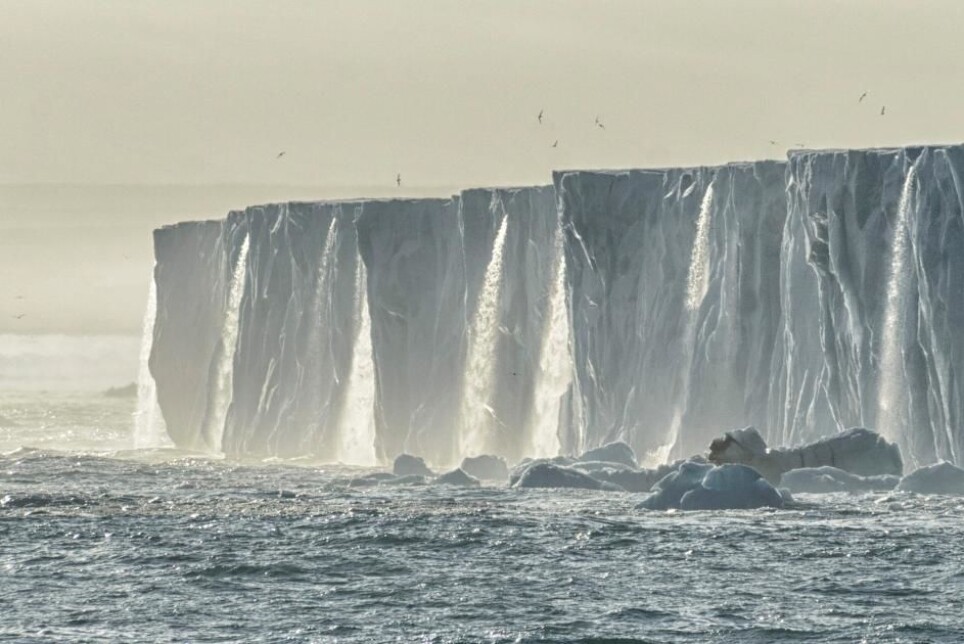THIS ARTICLE/PRESS RELEASE IS PAID FOR AND PRESENTED BY University of Oslo - read more

The world’s glaciers are melting faster than 20 years ago
Groundbreaking study confirms that glaciers are becoming thinner. The trend is also about to turn for the few glaciers that were still growing.
You've probably heard it before: Glaciers are shrinking. A new study confirms this with greater certainty than before. It also shows that glaciers are shrinking faster now than 20 years ago.
“For the first time, we have a series of data that extends over 20 years and that covers all the world's glaciers,” says Professor Andreas Kääb at the Department of Geosciences at the University of Oslo.
Together with scientists from France, Switzerland and Canada, Kääb and his colleagues in Oslo have analyzed data from the NASA satellite Terra, which was launched in 1999. At the time, they had no idea what kind of results they would get more than 20 years later, results that yesterday were published in the journal Nature.
“Now we get results from these data that those who built the satellite had never thought of,” Kääb says to Titan.uio.no.
The satellite works in much the same way as the human brain calculates distance. Our brain can do this because our eyes see an object from two different angles.
“The satellite takes two different pictures from two different angles, and from these images computers can calculate the distance from the ground to the satellite. If we do this over time, we will also see if what is down there on the ground becomes smaller or if it grows,” Kääb explains.
Shrinking faster than before
The results from the study of the 220.000 glaciers confirm that the glaciers are shrinking, and they also show that they are shrinking faster now than 20 years ago.
“The melting has accelerated. We have become accustomed to reading about this, but it really has accelerated. There are only two areas where the glaciers have grown a little,” Kääb says.
From 2000 to 2019, the glaciers have annually lost 267 gigatonnes of ice. The researchers point to Alaska, Iceland and the Alps as areas where melting occurs fastest. The ice sheet in Greenland and Antarctica is not included in these calculations. For these, researchers have other methods and other studies that are better suited.

Trend is reversing for growing glaciers
Even though the climate is getting warmer, there are areas where the glaciers have grown in the period from 2000 until today. Climate deniers may claim that growing glaciers are proofs against climate change, but this effect is completely in line with expectations.
“When the climate gets warmer, the atmosphere can hold more water. In some places there will therefore be more precipitation,” Kääb says.
When this precipitation comes as snow, it contributes to the glaciers becoming larger, but this effect is about to subside and disappear, for example in the Karakoram mountain range in the border area between Pakistan, China and India.
“This is an area where the glaciers have grown due to more precipitation,” Kääb says.
This phenomenon is called the Karakoram anomaly.
“Our results show that the period of growing glaciers in Karakoram is over. The reason is not necessarily that there was less precipitation, it's because it's getting even warmer. It will be too hot for more precipitation to compensate for the melting ice,” Kääb says.
Up to a certain point, the warming in some areas can contribute to the glaciers growing, but if it gets too warm, this effect disappears.
“It seems like the Karakorum anomaly is over, simply because it has become too hot,” Kääb says.
Jet streams over Greenland
The other area that has experienced growing glaciers is at the east coast of Greenland. Not the ice sheet itself, but the glaciers along the coast.
“There we have seen that the glaciers are growing, but we are not quite sure why. We know it's because of more snow, but not why there's more snow there,” Kääb says.
One theory is that jet streams have transported more precipitation to this area in recent years. Jet streams are fast flowing, relatively narrow air currents at about 5 to 15 kilometres above sea level.
“This phenomenon is not permanent. Such jet streams eventually disappear,” Kääb says.
Neither he nor other climate scientists are surprised that glaciers can grow at the same time as it gets warmer.
“This effect was anticipated long before the changes in these areas were observed.”
Affects people’s lives
Normally we are most concerned about how much the sea will rise when we talk about ice melting. Especially when it comes to Antarctica and Greenland.
“Sea level rise from melting in Greenland and Antarctica is getting closer and closer, but today much of the sea level rise comes from all the other glaciers. They are now declining more than Greenland and Antarctica,” Kääb says.
In the last 20 years, the rest of the world's glaciers have lost as much volume as the two huge ice caps combined. In addition, the more than 200,000 glaciers can affect humans in other and equally dramatic ways.
“These glaciers are located in places where people live. People in the Himalayas or in the mountains of South America do not care so much about sea level rise. They care about the supply of water during dry periods,” Kääb says.
The only water they have comes from glaciers, and these glaciers have provided stable river flow through the ages.
“If it gets warmer and the glaciers melt, there will first be a lot more water. There may be even too much water and they may experience flood. As the glaciers get smaller and smaller, the trend reverses. Then they suddenly get less and less water. This causes problems both for agriculture, for water supply and for hydropower,” the professor says.
Reference:
Romain Hugonnet mfl.: Accelerated global glacier mass loss in the early twenty-first century. Nature, 2021. (Summary)
———
Read the Norwegian version of this article at forskning.no
See more content from the University of Oslo:
-
Putin’s dream of the perfect family
-
How international standards are transforming the world
-
A researcher has listened to 480 versions of Hitler's favourite music. This is what he found
-
Researcher: "AI weakens our judgement"
-
New, worrying trend among incels, according to researcher
-
Ship’s logs have shaped our understanding of the sea





































